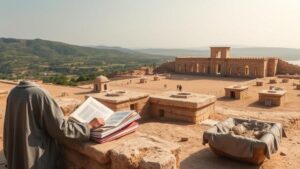Examining how erosion uncovers layers of history in tunnel systems.
Examining How Erosion Uncovers Layers of History in Tunnel Systems
Erosion, a natural process that shapes our landscapes, is often seen as a destructive force. But, in the context of tunnel systems, erosion can also act as a revealing agent, uncovering layers of history that bear witness to past human activity and geological changes. Understanding this complex interaction is key to both historians and geologists as they decode the narratives embedded within tunnel systems across the globe.
The Mechanism of Erosion in Tunnel Systems
Erosion can occur through various mechanisms, including water runoff, wind, and even the biological activity of plants and animals. Within tunnel systems, particularly those that are abandoned or inadequately maintained, water intrusion can lead to significant erosion.
- Water Erosion: Rain and groundwater can seep into tunnels, dissolving minerals and carrying away sediments. This process can expose underlying strata, which may contain artifacts or geological formations previously hidden from view.
- Wind Erosion: In arid tunnel environments, wind can play a part in the erosion process. Dust and loose material are continuously removed, revealing deeper layers of history.
Case Studies of Erosion Revealing Historical Layers
Several notable examples illustrate how erosion has unveiled intriguing aspects of both geological and human history.
The Catacombs of Paris, France
The Catacombs of Paris, an extensive network of underground tunnels, were established in the late 18th century. e tunnels are composed of limestone, and the erosion of the stone over the years has revealed ancient carvings and inscriptions left by workers in the 17th century.
- Date Established: 1786
- Function: Originally created to combat urban decay, now a site of historical significance.
- Findings: Erosion has exposed markers that indicate how these tunnels were operated, providing insight into the lives of quarry workers.
The Salt Mines of Wieliczka, Poland
The Wieliczka Salt Mine, operational since the 13th century, is another timeless example. Erosion has not only carved out extensive tunnels but has also revealed artifacts from various periods. The mine features underground chapels and sculptures that were crafted by miners, providing a unique intersection of artistry and labor.
- Historical Significance: One of the oldest salt mines in the world, recognized as a UNESCO World Heritage Site in 1978.
- Artifacts Revealed: Through erosive processes, historians have been able to discover old mining tools and religious sculptures, which give context to the socio-economic conditions of the time.
The Interaction Between Human Activity and Erosion
As human activities such as mining, construction, and vandalism take their toll on tunnel systems, it becomes imperative to study the dual role of erosion–both as a natural and anthropogenic factor. Understanding how human actions influence erosion can lead to better preservation strategies.
- Challenges: Increased human activity, such as tourism in historical tunnels, can accelerate erosion and damage artifacts.
- Conservation Efforts: Archaeological teams are employing meticulous excavation methods to mitigate erosive damage while uncovering layers of history.
Conclusion: The Importance of Understanding Erosion in Tunnel Systems
As erosion continues to shape tunnel systems globally, the implications for historical and archaeological research are profound. Each layer exposed by erosion tells a story, providing insights into not only the environment but also the human experiences embedded within these structures.
To maximize the potential for future discoveries, it is crucial to advocate for the preservation of these tunnel systems and to conduct ongoing research. Understanding the interactions between natural forces and human history can foster a deeper appreciation of our past and its relevance to the present.
Actionable Takeaways
- Engage with local historical societies to learn more about your areas tunnel systems.
- Support preservation initiatives aimed at protecting these significant cultural sites.
- Encourage interdisciplinary collaborations between historians and geologists to further investigate the effects of erosion.



